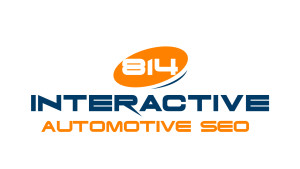Those of us who have worked in SEO for a long time forget that there are people who don’t know what ROI or Metadata or H1 tags are.
If you are an automotive dealership looking for search engine optimization, it can be easy to get lost in the jargon and acronyms.
Here are the most basic terms and definitions for those who are just getting familiar with automotive SEO. Even if you are hiring a professional to take care of your SEO, you will still want to know these definitions to ensure you and that professional are on the same page:
Algorithm
In search engine optimization discussions, you will hear the “algorithm” mentioned.
Though this sounds like something from The Matrix, it really just refers to the program that web crawlers (search engines like Google or Bing), use to evaluate webpages and determine where in the search rankings they belong, based on what search phrase the user put into the crawler.
Authority
Your automotive SEO professional will probably talk about building authority and linking to high-authority websites.
But what do either of those things mean?
You want to build your website’s authority on your niche—this means making sure that your website is a hub of information about your specific sector of an industry.
This makes your website more valuable and more likely to have a high search ranking.
High-authority sites are important because if you link to them or have your link on one of their pages, you can steal some of their authority.
Don’t worry, you don’t really “steal” it—you just borrow it to help lift your webpage’s profile.
Wikipedia is a good example of website that has a great authority ranking on Google, despite the fact that your professors and teachers told you to never reference it in an academic paper.
Black Hat
Black hat refers to any SEO tactic that, while effective for a short time, are not approved by Google and its Webmaster Guidelines.
Why is it important to stay away from black hat SEO techniques?
Mostly because Google seeks out websites that use these tactics and either lowers their search ranking or removes them from search altogether.
Google doesn’t like websites that don’t play by their rules.
Blog
Besides being a silly word (derived from “web log”), a blog is a part of your website that allows you to publish a consistent stream of content.
A blog is important for your automotive dealership because it helps you build authority, allows you to include massive amounts of keyword-rich content, and provides relevant, interesting topics that help searchers find not just your blog, but also your dealership.
There are plenty of different formats that a blog can come in and they are easy for your developer to add to an existing website.
Content
Content is all of the text on your webpage and your blog.
Any writing or media that you have on your website counts as content, though advertising copy and navigation are usually not lumped in with content.
Conversion Rate
Many people believe that the main purpose of automotive SEO is to draw traffic to their website.
While this is true, SEO should also help you improve your conversion rate.
Your conversion rate is the ratio of page visitors who take the action you want them to take.
For a dealership, a “conversion” is likely placing a call to your dealership or actually coming to the lot to look at cars.
Your content can help encourage a page visitor to make that call or to visit your dealership, not just attract site visitors to your website.
Duplicated Content
This is a major problem for many webmasters.
While you might have completely original content, if you use your own content more than once on the same website, it will still be considered duplicated content and search engines will give it less (if any) attention.
Duplicated content can also refer to content lifted directly from another website, which is a big red flag for search engines, who see this as a mark of an extremely low-value website.
Juice
You’ll also often hear the word “juice” being bandied about.
This is authority, trust, or even page rank that flows from one website to another.
If your hear your automotive SEO professional talk about “stealing juice” or “using their juice,” this just means that you are going to use the power already accumulated by another webpage to help lift your webpage in relevant search results.
Hub
This is another word that you will hear plenty of times—including in this article.
A hub is a high-quality page that is rich with useful information and content.
It can also refer to a page that has many high-quality links in that valuable content, which take the readers to equally valuable pages.
You want to be a hub!
Impressions
The definition for “impression” can vary depending on who you are talking to, but in general, an impression is a page view.
If someone clicks on your link in the search results and views your dealership’s page, that is an impression.
In some contexts, an impression can be how many users actually saw your link, even if they did not click on it.
For example, if your link showed up on the first page of 200 searches in a month and all of those users scrolled past it, you might be told you had 200 impressions that month, even if not all of those users clicked into your website.
Keyword
Simply put, this is the word or phrase that a searcher puts into a search engine when they are looking for information on a specific topic.
It is also the word or phrase that you want included in your content so you are more likely to show up in those search results.
While this obviously isn’t everything you need to know, this will definitely get you started!




